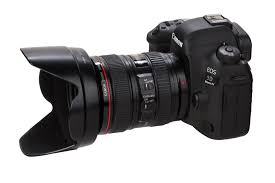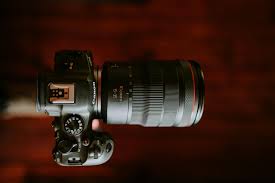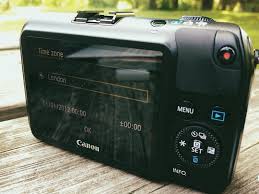Cinematic Cameras That Are Affordable: The Canon EOS M Magic
- manav verma

- Feb 16
- 3 min read
Hey, have you ever dreamed of shooting cinematic footage without breaking the bank? Yeah, we’ve all been there. Enter the Canon EOS M, a little camera that punches way above its weight. Released back in 2012, this unassuming mirrorless camera has become a hidden gem for indie filmmakers and photography enthusiasts alike. But what makes it so special? Let me break it down into Affordable Cinematic Cameras for you.
What’s the Big Deal About the Canon EOS M?
At first glance, the Canon EOS M looks like your average entry-level mirrorless camera. It’s small, lightweight, and doesn’t scream “professional gear.” But here’s the kicker: with a little help from Magic Lantern (a custom firmware hack), this camera transforms into a raw video powerhouse. Imagine shooting 14-bit raw video in 1080p without needing an external SSD or recorder. Yeah, you heard that right. All you need is a standard SD card and the battery that comes with it.
In my opinion, this is one of the most affordable Cinematic Cameras ways to get cinematic-quality footage. Sure, it’s not going to compete with a RED or ARRI, but for its price? It’s like swapping instant noodles for a Michelin-starred curry.
Why Isn’t Everyone Talking About This Camera?
Here’s the catch: Magic Lantern isn’t officially supported by Canon. It’s a third-party firmware that unlocks features the camera wasn’t originally designed for. Think of it like jailbreaking your phone—it’s powerful but comes with risks. You might void your warranty, and there’s a learning curve to using it effectively. But if you’re willing to dive in, the results are stunning.
What Can You Do, Affordable Cinematic Cameras With the Canon EOS M?
With Magic Lantern, the EOS M becomes a mini filmmaking beast. Here’s what you gain:
14-bit raw video: Insane dynamic range and color depth.
Focus peaking, zebras, and histograms: Tools to nail focus and exposure.
5K raw mode: Yes, you read that right—5K! (Though it’s more experimental.)
Customizable settings: Tailor the camera to your specific needs.
I’ve shot some footage with this setup, and let me tell you, the quality is mind-blowing. It’s not the sharpest 1080p you’ll ever see, but the colors and dynamic range? Chef’s kiss.
My Rig and Setup
If you’re thinking of trying this out, here’s what I use:
SmallRig Universal Cage: Adds mounting points and makes the camera easier to handle.
Tokina 28-70mm f/2.6-2.8 Lens: A fantastic lens that pairs perfectly with the EOS M.
Magic Lantern Firmware: The secret sauce that unlocks raw video.
This combo turns the EOS M into a compact, budget-friendly cinema camera. It’s not perfect—battery life takes a hit, and the workflow can be a bit clunky—but for the price, it’s hard to beat.
How Does It Compare to Other Affordable Cinema Cameras?
Let’s put the EOS M side by side with some other popular options:
Feature | Canon EOS M (Magic Lantern) | Blackmagic Pocket Cinema 4K | |
Price | 200−200−300 (used) | $1,295 | $1,297 |
Video Resolution | 1080p raw | 4K DCI | 4K UHD |
Dynamic Range | 12-14 stops (estimated) | 13 stops | 12 stops |
Portability | Extremely compact | Bulky | Compact |
Ease of Use | Requires firmware hack | Plug-and-play | Plug-and-play |
As you can see, the EOS M isn’t the most powerful camera on the list, but it’s by far the most affordable. If you’re on a tight budget, it’s a no-brainer.
Tips for Shooting Cinematic Footage
Use a Fast Lens: The Tokina 28-70mm f/2.6-2.8 is my go-to, but any fast lens will do.
Shoot in Raw: It’s a game-changer for color grading and dynamic range.
Stabilize Your Shots: Use a gimbal or tripod to avoid shaky footage.
Experiment with Lighting: Raw video loves good lighting, so don’t skimp on this.
Learn Magic Lantern: Spend time exploring the firmware’s features—it’s worth it.
Other Canon EOS M Models
The EOS M was just the beginning. Canon has since released several other models in the EOS M line, like the EOS M50 and EOS M6 Mark II. These newer cameras offer better autofocus, 4K video, and improved ergonomics. However, they don’t have the same raw video capabilities as the original EOS M with Magic Lantern. If raw video is your priority, the OG EOS M is still the way to go.
Final Thoughts
The Canon EOS M is like that underrated indie film you stumble upon and can’t stop talking about. It’s not perfect, but it’s full of potential. With Magic Lantern, it becomes one of the most affordable ways to shoot cinematic footage. Sure, it takes some effort to set up, but the results are worth it.
If you’re curious, check out Sergio Ruso's YouTube channel for more in-depth tutorials on Magic Lantern. And if you’re ready to take the plunge, grab a used EOS M and start experimenting. Who knows? You might just create your next masterpiece.
HAPPY READING!!!










Comments